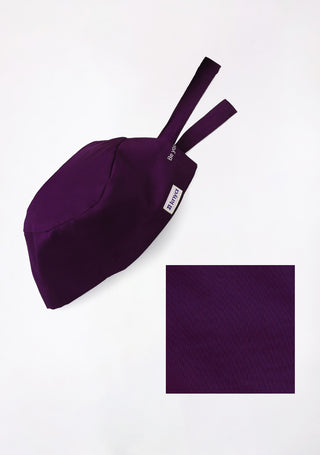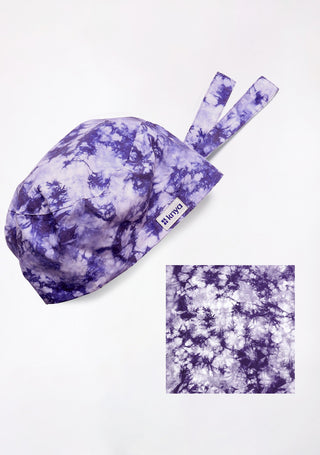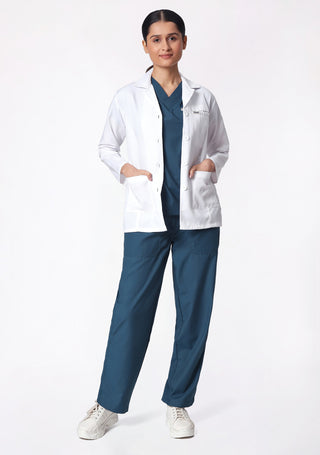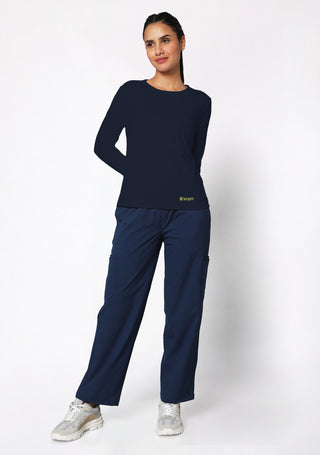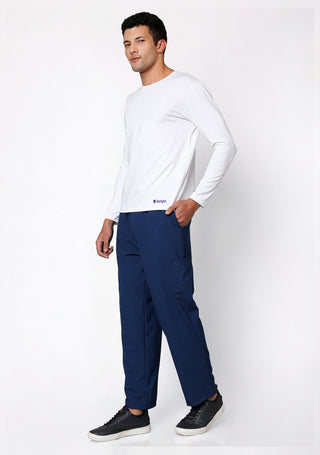In the world of healthcare, infection control is paramount. From hospitals to clinics, preventing the spread of infections is critical to ensuring the safety of both patients and healthcare professionals. One often overlooked aspect of infection prevention is medical uniforms. Medical scrubs, doctor lab coats, surgical caps, and underscrubs serve as a barrier against harmful pathogens, reducing the risk of contamination.
In this blog, we will explore how medical uniforms contribute to infection control and discuss the best practices for maintaining their hygiene.
1. Medical Uniforms as a Barrier Against Infections
Medical uniforms act as the first line of defense against bacteria and viruses. Healthcare professionals come into contact with various infectious agents during their shifts, making it essential to wear protective clothing that minimizes exposure.
1.1 Antimicrobial Scrubs for Added Protection
Many modern medical scrubs are designed with antimicrobial technology, which inhibits the growth of bacteria and fungi on the fabric. These scrubs for men and scrubs for women provide an extra layer of protection, ensuring that microbes do not spread through clothing.
Antimicrobial uniforms are especially beneficial in high-risk environments such as emergency rooms, intensive care units, and surgical suites. Studies have shown that antimicrobial fabrics significantly reduce microbial contamination compared to standard uniforms. These advanced fabrics also resist odors and stains, maintaining a fresh and professional appearance throughout long shifts.
Click here to Explore All Women's Scrubs and discover our complete collection of comfortable and stylish medical apparel
2. The Importance of Proper Laundering
While wearing high-quality medical scrubs is crucial, proper laundering practices are just as important in preventing infections. Without proper cleaning, uniforms can become a reservoir for bacteria, leading to the transmission of harmful pathogens within healthcare settings.
2.1 Best Practices for Cleaning Medical Uniforms
- Wash Daily: Uniforms should be washed after every shift to remove contaminants.
- Use Hot Water & Disinfectants: Washing scrubs in hot water (above 60°C) with medical-grade detergents eliminates bacteria and viruses.
- Separate Laundry: Medical uniforms should never be washed with regular clothes to prevent cross-contamination.
- Use Industrial or Hospital-Grade Washing Machines: These machines are designed to meet hygiene standards and eliminate pathogens effectively.
- Follow Facility Guidelines: Healthcare institutions often have specific protocols for laundering uniforms—adhering to them ensures maximum hygiene.
Proper laundering practices also extend the life of medical uniforms, ensuring that they maintain their protective qualities and comfort for a longer time.
3. Easy Identification & Role Clarity
Uniforms are not just about protection—they also help in role differentiation. Color-coded scrubs for healthcare professionals allow staff and patients to identify roles quickly, ensuring efficient care and reducing the risk of cross-contamination.
For example:
- Surgeons may wear surgical caps and specific-colored scrubs to maintain a sterile environment.
- Nurses might have a designated color for their scrubs for women or scrubs for men, helping patients identify them easily.
- Doctors often wear a doctor white coat over their scrubs, distinguishing their role and adding an extra layer of protection.
Wearing designated uniforms also contributes to professional identity and fosters trust between healthcare providers and patients.
We believe you deserve the best. Shop our amazing selection of lab coats right here
4. Choosing the Right Medical Fabrics
Not all fabrics are created equal when it comes to medical uniforms. The fabric’s quality and properties play a significant role in infection control and comfort.
- Durability: Medical professionals need long-lasting doctor coats and scrubs that withstand frequent washing without losing their effectiveness.
- Breathability: Proper air circulation in medical scrubs prevents overheating and maintains comfort, especially during long shifts.
- Liquid Resistance: Stain-resistant and liquid-repellent fabrics reduce contamination risks by preventing bodily fluids and hazardous materials from seeping into the fabric.
- Moisture-Wicking Properties: Scrubs with moisture-wicking technology help keep sweat away from the body, reducing bacterial growth and ensuring comfort during long shifts.
Investing in high-quality fabrics ensures both protection and comfort, leading to better performance and hygiene compliance.
5. The Role of Single-Use Medical Attire
In high-risk environments like ICUs and operating rooms, single-use scrubs, gowns, and surgical caps provide additional safety. These garments are discarded after each use, preventing the spread of infectious materials.
Disposable medical attire is particularly crucial in:
- Surgical procedures, where sterile conditions must be maintained.
- Infectious disease units, where reducing cross-contamination is critical.
- Emergency response situations, where medical professionals deal with unpredictable exposure risks.
While disposable attire contributes to infection control, proper disposal methods must be followed to minimize environmental impact and ensure safe waste management.
6. Best Practices for Maintaining Medical Uniform Hygiene
To maximize protection, healthcare professionals should follow these best practices:
- Change scrubs immediately if contaminated during a shift.
- Wear underscrubs to add an extra layer of protection and absorb sweat, reducing microbial growth.
- Store clean scrubs separately from used ones to prevent recontamination.
- Use designated storage areas for medical uniforms to avoid exposure to potential contaminants.
- Ensure proper fit—ill-fitting scrubs or loose lab coats can increase the risk of exposure by catching on equipment or dragging on surfaces.
Conclusion
Medical uniforms play a vital role in infection control by acting as a protective barrier against bacteria and viruses. From medical scrubs to doctor white coats, choosing the right attire and following proper hygiene practices can significantly reduce the risk of infection spread in healthcare settings.
By investing in high-quality, antimicrobial, and comfortable medical uniforms, healthcare professionals can ensure safety, comfort, and professionalism while providing the best patient care.
For a wide selection of top-quality scrubs for men, scrubs for women, doctor coats, and surgical caps, visit Knya.

